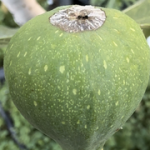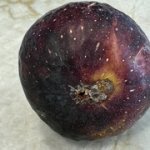Figaholics
Active member
Bad news. Today a home grower reported that CDFA confirmed that the infested fruits of a Panache tree she purchased on September 3rd from Green Acres Nursery in Sacramento were BFF. This was a larger tree in a 5 gallon pot with many immature fruit on it. County ag officials reported visited all locations of this nursery on Friday and removed any fruits from Panache trees still on hand. I am trying to find out the wholesale nursery source for these trees (I spoke with an employee there this evening and he was guessing who the source may have been but I don't want to mention any names without something concrete information.
According to Houston Wilson at UCR, there have been no other official reports of BFF. I've heard mention of it by various sources but apparently none of these possible finds were reported to officials or Houston just did not get word of it.
I imagine there are other retail nurseries with trees in similar condition and people may want to check nurseries in their area and report any finds to their county Agricultural Commissioner.
According to Houston Wilson at UCR, there have been no other official reports of BFF. I've heard mention of it by various sources but apparently none of these possible finds were reported to officials or Houston just did not get word of it.
I imagine there are other retail nurseries with trees in similar condition and people may want to check nurseries in their area and report any finds to their county Agricultural Commissioner.


